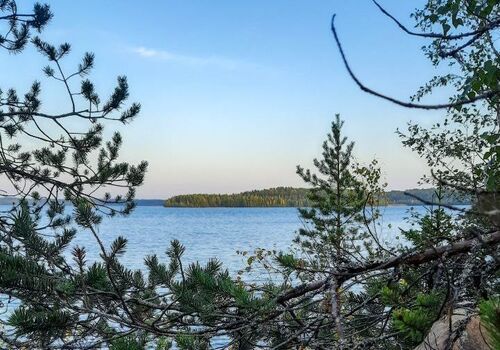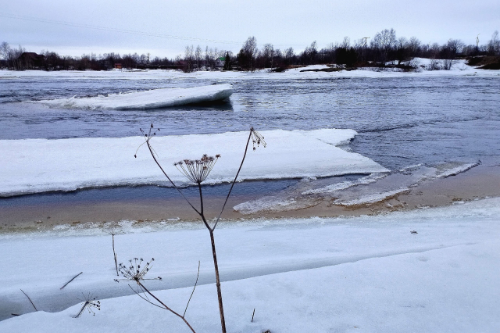Arctic research is one of the priorities for the Karelian Research Centre RAS. On July 2nd, an expedition organized by the Department for Multidisciplinary Research (DMR KarRC RAS) started. Its participants are specialists in ecology, sylvics, geology, mire science, soil science, and botany. The southern part of the Tersky Coast was surveyed in summer 2021. This field season the same team will advance further north up the Kola Peninsula – along from the Ponoy River mouth to the Kachkovka River mouth.
– There is a large massif of permafrost-based palsa bogs in this area. Last year we managed to survey a palsa bog near Chavanga River, which is considered the southern limit of permafrost in the Kola Peninsula. To track how glaciers had developed and thawed we need to move farther north and survey the most extensive palsa bog massif, – tells Nikolai Petrov, expedition leader, Researcher, DMR KarRC RAS Secretary for Science.
Monitoring of thawing processes and state of palsa bogs in the Kola Peninsula can provide an important marker of global climate processes. Scientists are carrying along a set of modern equipment for the research.
This expedition will continue mapping modern vegetation on the basis of satellite images. To obtain input data, scientists need field keys – areas of known size and configuration with a detailed description of the forest vegetation. As northern territories are of little value for the forest industry, no recent updates of departmental information are available. Researchers will have to collect the field data needed for subsequent interpretation of satellite images. Such studies are necessary for monitoring the current state of vegetation and for preventing environmental risks.
Other expedition activities will be inventory of the local flora, study of bedrock species and rock outcrops. Quadcopter will be used to create air survey plans and 3D models.
The integrated expedition to the Tersky Coast will last until July 16th. It will be followed by treatment and analysis of the results.
For more details on the 2021 Tersky Coast expedition visit our interactive map.
Photo by N. Petrov
News

July 4, 2022
Karelian scientists setting off on an integrated expedition to the Tersky Coast of the White Sea on board of the Ekolog research vessel. They will spend a fortnight in the Kola Peninsula studying palsa bogs resting on permafrost, rare and invasive plant species, rock species and collecting material for vegetation mapping.
See also:

July 7, 2025
A successful introduction: the zander has settled down in Lake Sundozero and continues to spread
Scientists of the Institute of Biology KarRC RAS have published the results of long-term observations over the population of the zander (or pikeperch) introduced to Lake Sundozero more than a half-century ago. They confirm the species has become naturalized. Maintaining the population requires regulation of harvesting, protection during spawning, and tending of spawning grounds.
Scientists of the Institute of Biology KarRC RAS have published the results of long-term observations over the population of the zander (or pikeperch) introduced to Lake Sundozero more than a half-century ago. They confirm the species has become naturalized. Maintaining the population requires regulation of harvesting, protection during spawning, and tending of spawning grounds.

June 26, 2025
Ice-related phenomena on rivers emptying into the White Sea now last three weeks less than 60 years before
Ice on northern rivers now forms later while ice-off occurs earlier. Karelian scientists confirmed this having analyzed 64 years of marine and meteorological data from the estuaries of rivers draining into the White Sea along its western coast. Climate change has bit three weeks off the ice-covered period on these rivers. The reductions have been the most significant in the last 30 years, aligning with global warming trends in Arctic water bodies.
Ice on northern rivers now forms later while ice-off occurs earlier. Karelian scientists confirmed this having analyzed 64 years of marine and meteorological data from the estuaries of rivers draining into the White Sea along its western coast. Climate change has bit three weeks off the ice-covered period on these rivers. The reductions have been the most significant in the last 30 years, aligning with global warming trends in Arctic water bodies.

June 23, 2025
Citizen science and web technologies help researchers study insects of Karelia
More than 30 insect species not encountered in Karelia previously have been revealed by entomologists from KarRC RAS during their expeditions and using data communicated by active participants of the iNaturalist portal – an open platform for collecting biodiversity data.
More than 30 insect species not encountered in Karelia previously have been revealed by entomologists from KarRC RAS during their expeditions and using data communicated by active participants of the iNaturalist portal – an open platform for collecting biodiversity data.



